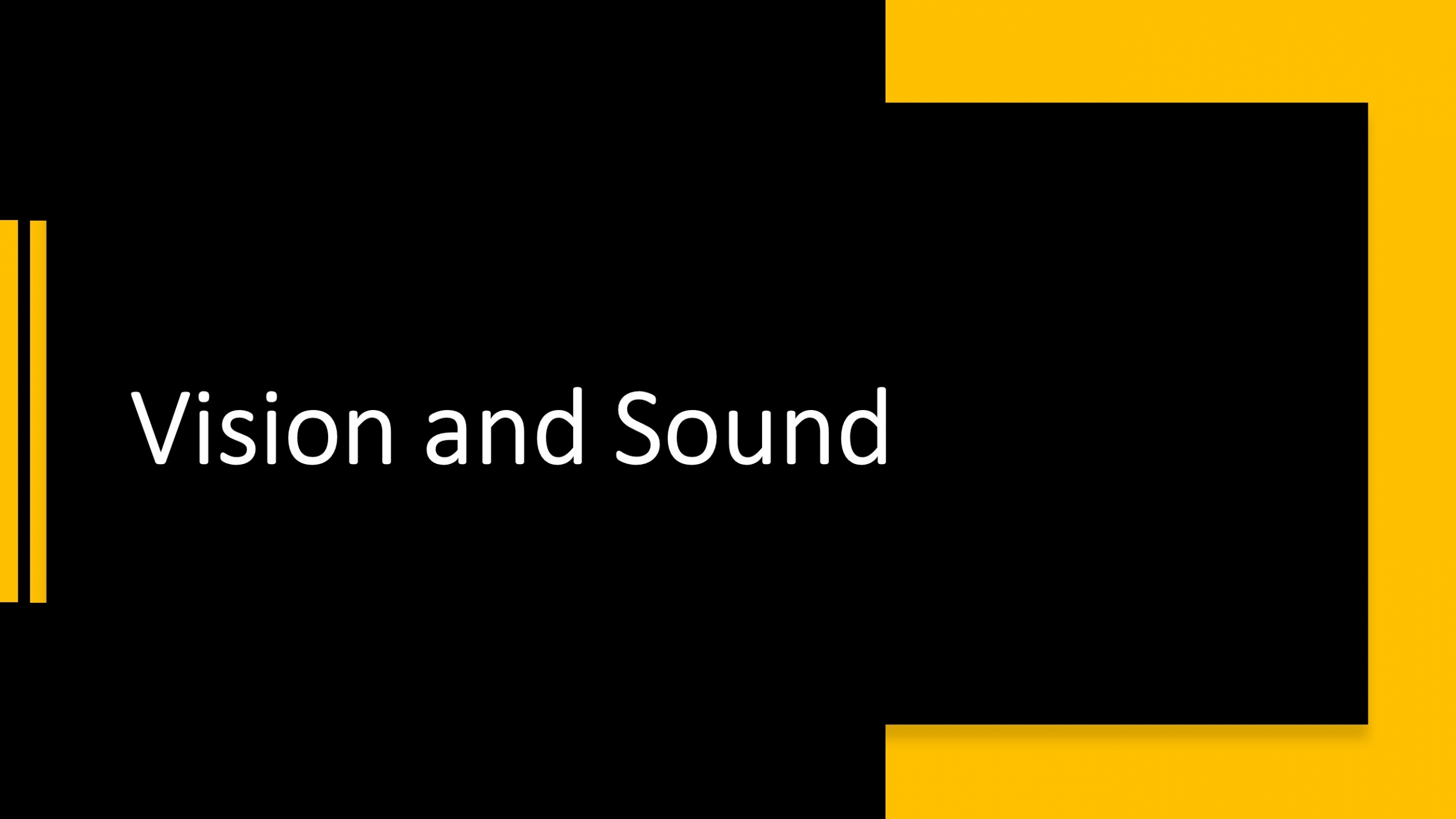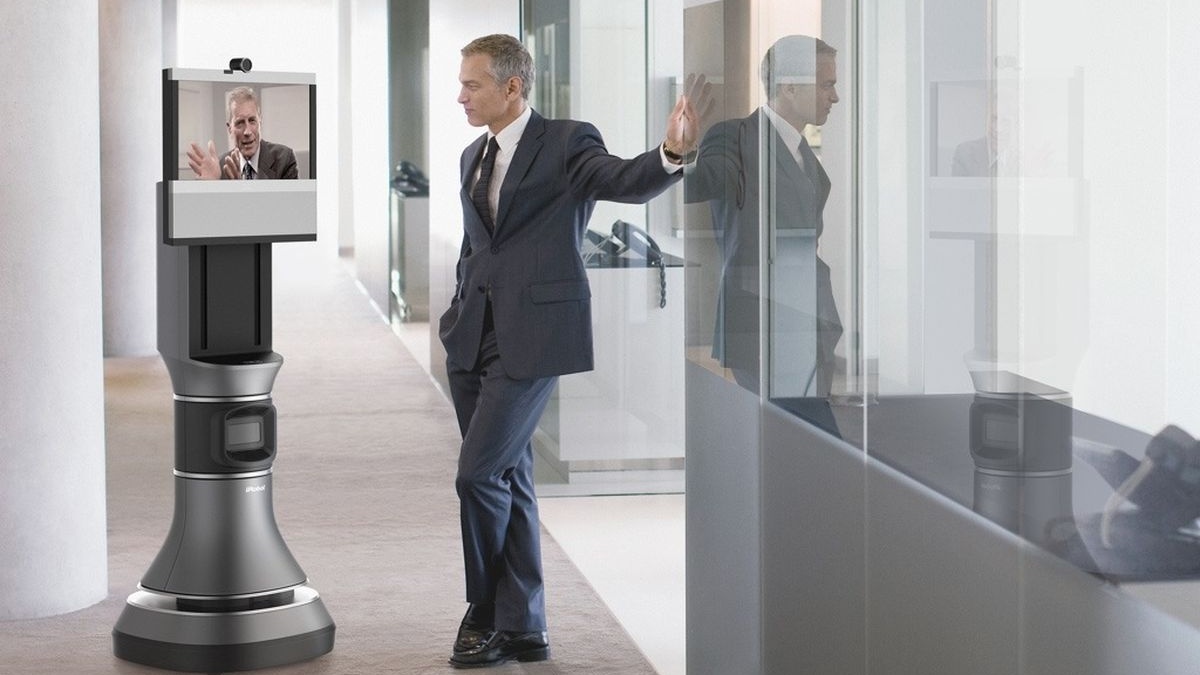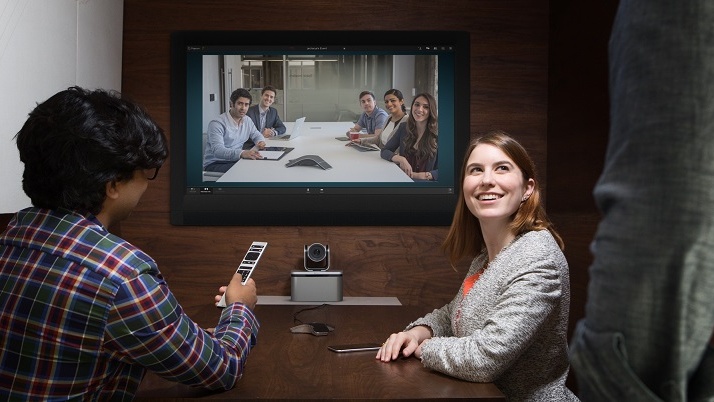Telepresence
Increase engagement with immersive, in-person video experiences to build relationships

Vision and sound
A minimum system usually includes visual feedback. Ideally, the entire field of view of the user is filled with a view of the remote location, and the viewpoint corresponds to the movement and orientation of the user’s head. In this way, it differs from television or cinema, where the viewpoint is out of the control of the viewer.
In order to achieve this, the user may be provided with either a very large (or wraparound) screen, or small displays mounted directly in front of the eyes. The latter provides a particularly convincing 3D sensation. The movements of the user’s head must be sensed, and the camera must mimic those movements accurately and in real-time. This is important to prevent unintended motion sickness.
Another source of future improvement to telepresence displays, compared by some to holograms, is a projected display technology featuring life-sized imagery
Sound is generally the easiest sensation to implement with high fidelity, based on the foundational telephone technology dating back more than 130 years. Very high-fidelity sound equipment has also been available for a considerable period of time, with the stereophonic sound being more convincing than monaural sound.




Teleoperation
The ability to manipulate a remote object or environment is an important aspect for some telepresence users and can be implemented in a large number of ways depending on the needs of the user. Typically, the movements of the user’s hands (position in space, and posture of the fingers) are sensed by wired gloves, inertial sensors, or absolute spatial position sensors. A robot in the remote location then copies those movements as closely as possible. This ability is also known as teleoperation.
The more closely the robot re-creates the form factor of the human hand, the greater the sense of telepresence. The complexity of robotic effectors varies greatly, from simple one axis grippers, to fully anthropomorphic robot hands.
Haptic teleoperation refers to a system that provides some sort of tactile force feedback to the user, so the user feels some approximation of the weight, firmness, size, and/or texture of the remote objects manipulated by the robot. A new form of technology, called collaborative telepresence, is currently being developed which will eventually be used to collaborate with others while seeming like you are in the same room as the other person, keeping a normal social distance. Collaborative telepresence systems uses haptic sensors like these to allow a sense of touch.
Consulting
Schedule a meeting with our experts.
Demonstration
Experience the product from an expert
Quotation
Professional price quote every time
Freedom of movement
The prevalence of high quality video conferencing using mobile devices, tablets and portable computers has enabled considerable growth in telepresence robots to help give a better sense of remote physical presence for communication and collaboration in the office, home or school when one cannot be there in person.
The robot avatar can move or look around at the command of the remote person. Drivable telepresence robots – typically contain a display (integrated or separate phone or tablet) mounted on a roaming base. Some examples of roaming telepresence systems include Beam by Suitable Technologies, Double by Double Robotics, RP-Vita by iRobot, Anybots, Vgo, TeleMe by Mantarobot, and Romo by Romotive.
More modern roaming telepresence systems in UAE may include an ability to operate autonomously. The robots can map out space and be able to avoid obstacles while driving themselves between rooms and their docking stations




Telepresence Effectiveness
Telepresence’s effectiveness varies by degree of fidelity. Research has noted that telepresence solutions differ in degree of implementation, from “immersive” through “adaptive” to “lite” solutions.
At the top are immersive solutions where the environments at both ends are highly controlled (and often the same) with respect to lighting, acoustics, decor, and furniture, thereby giving all the participants the impression they are together at the same table in the same room, thus engendering the “immersive” label.
Adaptive telepresence systems may use the same technology, but the environments at both ends are not highly controlled and hence often differ. Adaptive solutions differ from telepresence lite solutions not in terms of control of environments, but in terms of integration of technology. Adaptive solutions use a managed service, whereas telepresence lite solutions use components that someone must integrate.
Virtual Presence (Virtual Reality)
An Online Video Web Conference in an office, Telepresence refers to a user interacting with another live, real place, and is distinct from the virtual presence, where the user is given the impression of being in a simulated environment.
Telepresence systems and virtual presence rely on similar user-interface equipment, and they share the common feature that the relevant portions of the user’s experience at some point in the process will be transmitted in an abstract (usually digital) representation. The main functional difference is the entity on the other end: a real environment in the case of telepresence, vs. a computer in the case of immersive virtual reality.
Mediated experiences are not limited to virtual technology and can also be experienced with spatially distant places such as space with a telescope or a camera


TELEPRESENCE INSIGHTS
Special Offers, Tips & Tricks alongwith latest News & Developments in the Telepresence industry.
We’d love To Meet You In Person Or Via The Web!
Main Office:
Phone:
WhatsApp:
Email:
